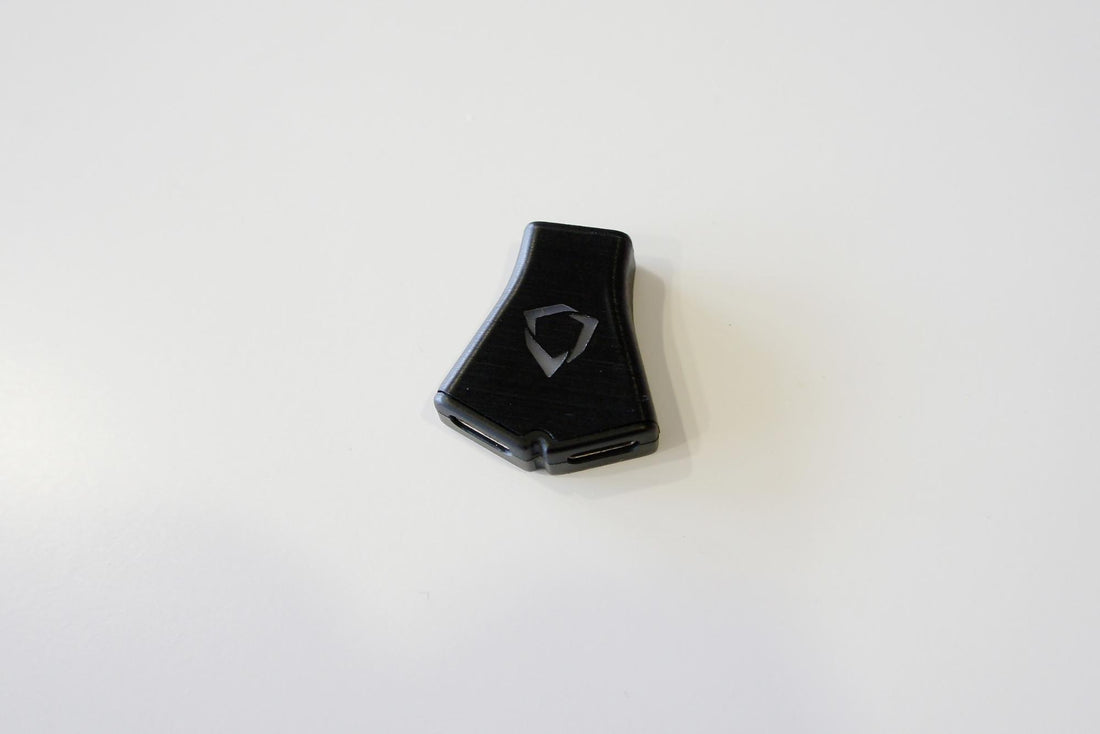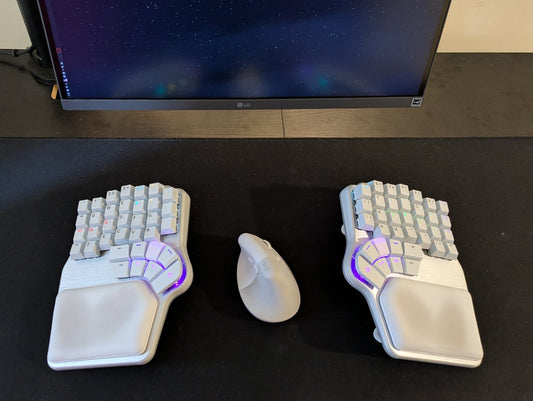Hey there guys!
Manel and Matt arrived last Friday from Shenzhen. They had a very productive and busy trip.
We will post a thorough update about their trip and all the developments within the week! So stay tuned!
For now, we have simply prepared more informational and ‘fun’ piece of content for all of you to learn from and enjoy.
Huble - the brains of the keyboard
The Huble is a separate piece that you connect to your computer and to the 2 sides of the keyboard. It is the brain of the keyboard; the microprocessor and memory are inside it. The cables that come with it are all detachable.

The reason that we created this piece separately is that we want you to be able to use either the left or the right side on its own. This means we can't have the USB chip in one side or the other. We would need either two separate USB keyboards or have the USB chip split and then split the wires down into the keyboards.
The electronics in the Huble deals with the USB and talking to the PC. The electronics in each of the keyboards deals with reading the key presses and controlling the LEDs.
Inside the Huble, we have a circuit board that has a USB-C socket to get the USB data. This has the power to control the whole keyboard.

The chip on the back is what does all the work. We load the firmware onto that and that does all the coordination. It talks to the computer via USB and it talks to the keyboard sides with a protocol called I2C.

That information comes out of these two sockets.

We've also got an LED on the front to shine out of the Dygma logo.

We have a reset button at the back of the Huble, in case stuff goes wrong or to help with uploading new firmware.
What happens after the data and the power comes out of the Huble?
The data comes down through 2 USB-C cables and into the USB-C sockets on the back of the keyboards.
Inside the two sides, we have 4 circuit boards. The 2 main PCBs and the 2 low profile PCBs.
The power and the I2C communication comes down the cables in to the PCBs. We have a little soft start circuit so that if you plug it all into the computer together, we don't get a big power supply jolt.

The main computer on each side is a microchip, which is an 8-bit microcontroller from Atmel. And its job is to read all the keys as quickly as it can and to control the LEDs.
So if the keys are going to all be red, the Huble sends the information down the I2C, then the microcontroller receives that information. They then send the data to tell the LEDs to go red to the LED driver, which is the chip that controls the LEDs.

For every key, we have a corresponding socket. They are the hot plug sockets that let you change your switches so you can pull them in and out.

Once the key is latched into the top plate, you would need a little tool to help you unclip it - the keycap / switch puller.

Underneath, we have reverse mounted RGB LEDs, as well as a diode for each key. The diode has to do with scanning the matrix of keys together because instead of reading each key individually, we're scanning them in a kind of column and row matrix and the diodes are an important part of that.
Another important part of the PCB is this little plug where we connect the circuit boards of the low profile switches.

These circuit boards have their own two LEDs and their own set of sockets for the low profile switches.
The low profile switches are thinner. So we had to have the low profile PCB at a different level; it had to be a little bit higher than the normal PCB so that it could fit properly. That is why we had to have a separate PCB.
They are connected with a flexible wire and clipped together with a plug.

That's pretty much the whole product in terms of its PCBs and the overall functionality.
Hope you enjoyed this article! If you have any questions, don’t hesitate to leave a comment below!









